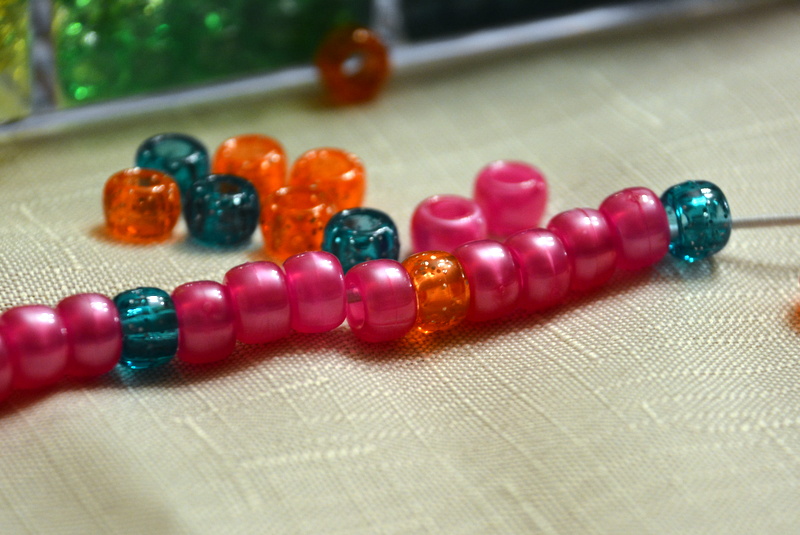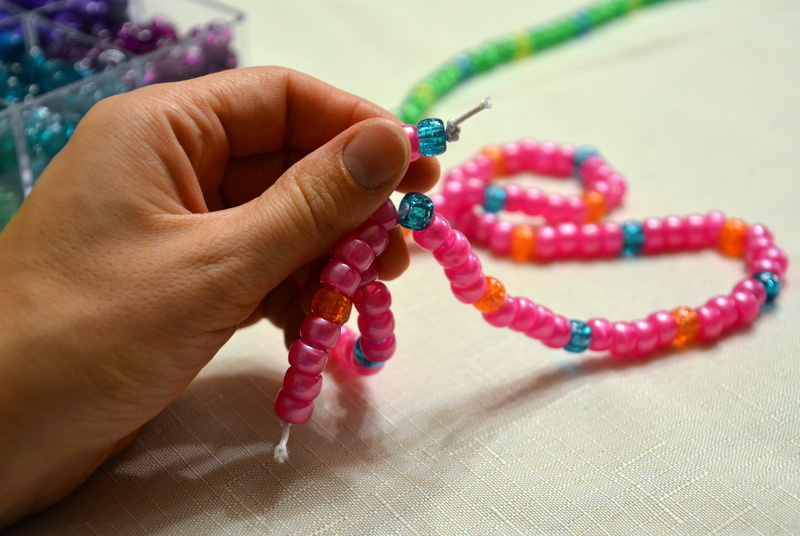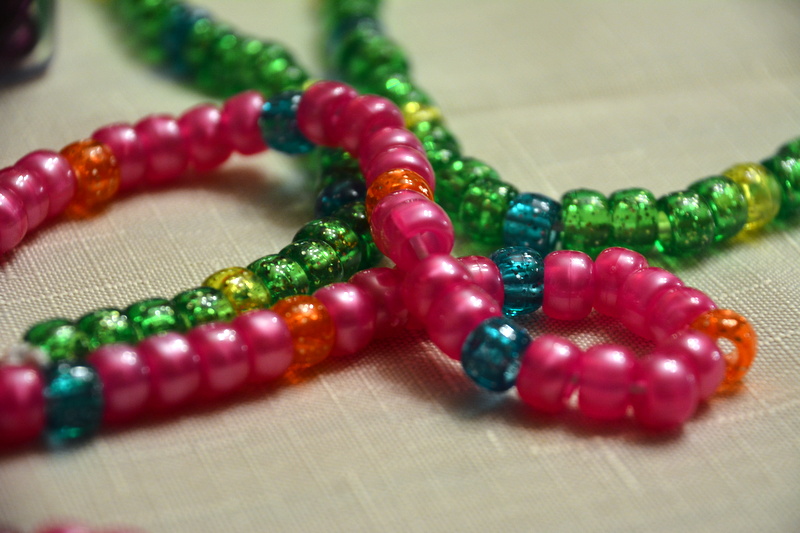When I was in first grade, my teacher–an organized, no-nonsense woman–told us if we couldn’t remember a math fact, we should get out our box of crayons and use them to help us find the answer. Crayons worked well as a teaching tool for her–but maybe her natural organizational skills and disciplined classroom atmosphere rubbed off on her students. I am afraid if I gave my first graders the same suggestion, there would be crayons rolling all over the classroom. They can’t seem to hold onto their pencils, let alone successfully arrange handfuls of crayons across their desks. And they bring the BIG boxes of crayons–because I’ve never had the heart to tell their parents, as my teacher did mine, that more than 24 crayons are unnecessary for a first grader.
So I invented counting beads. They work even better than crayons, in my opinion. A first grader can easily use them to learn counting, or to figure out new or difficult math facts. The beads also work great as an aid to second or third graders in pulling up facts they’ve forgotten. They could be used to teach multiplication and division as well as addition and subtraction, and would make a worthwhile aid for a struggling learner.
My third grader especially loves these beads. She is a very hands-on learner who sometimes has trouble hanging on to those slippery math facts–especially after having the summer off. She never seemed to get the hang of mentally counting up or down to find an answer, but using the beads, she can find the answer in a whiz. We practice flashcards to gain instant recognition, but the beads help her get through her daily work without frustration. And since they are both visual and kinesthetic, I think they’ll help her remember the facts better in the long term.
Here are the supplies you’ll need:

- Pony beads
- Round cord elastic (Or substitute some other high-endurance string.)
- Scissors
If the child can create their own bead string, they will like it better, and stringing the beads will help them become familiar with how to use them.
First, tell the child to choose three colors. Cut off a length of elastic–30 inches is about right–and tie a knot at one end.
Show the child how to string four beads of Color 1 and then add a bead of Color 2.

Next, show them how to string four more beads of Color 1 and then add a bead of Color 3. The child should repeat this pattern ten times for a total of 100 beads.

When the child is is finished, tie a knot at the open end of the elastic. I like to leave a little bit of extra space for sliding beads up and down the string or for dividing them into groups.

Since every fifth and tenth bead is a certain color, the counting beads work well for teaching how to count by fives and tens. And when the child can count by fives and tens, they will have no problem finding numbers on their string very quickly. Be sure they understand that their counting bead string starts at a certain end–bead number 100 will be a different color than bead number 1.

Your counting beads are finished! Enjoy.

That’s a super idea! I teach 1st and 2nd grade, and am always looking for fun ways to help them learn a little easier. I’m seeing an art class on Friday with beads. Just don’t ask how many beads will clatter through the sweeper as we clean afterwards. 😊
An art class is a great idea. :) Hope these work well for you.
Love this idea. I even think I have some pony beads around here. Unless they all disappeared in the vacuum cleaner after one too many times on the floor.
Gina
This is an excellent idea! I do something similar….it comes from a book “Number Talks” by Sherry Parish. (just throwing out another resource! =) This book is about helping children build mental math and computation strategies. My children use “rekenreks”….similar to an abacus, but made from cardboard, holding two strings of 10 beads each. Addition and subtraction are a whiz on these! Yes, I’m totally with you on the whole things of “can’t hold onto their pencils”. And I don’t really want to use crayons either, so…..=)
Sounds great. Thank you for the resource.
F-A-N-T-A-S-T-I-C idea!
Why thank you! Good to hear from you, Laurie.
Super idea, capitalizing on the proven fact that the brain loves color. Also, using the tactile approach embeds the learning in both the hands and mind. It’s obvious you are a born teacher, Luci. Great job!
Thank you, Marian! :)